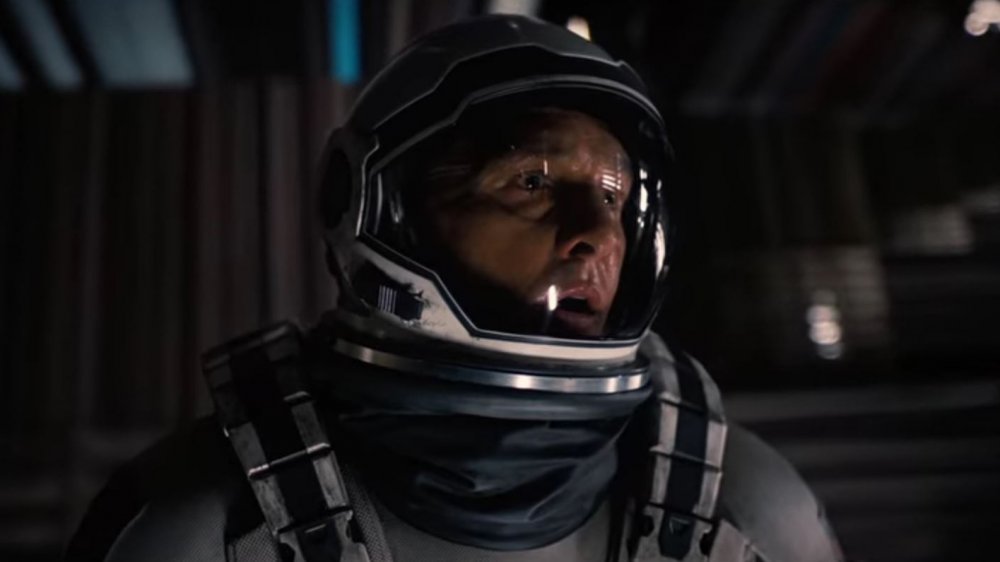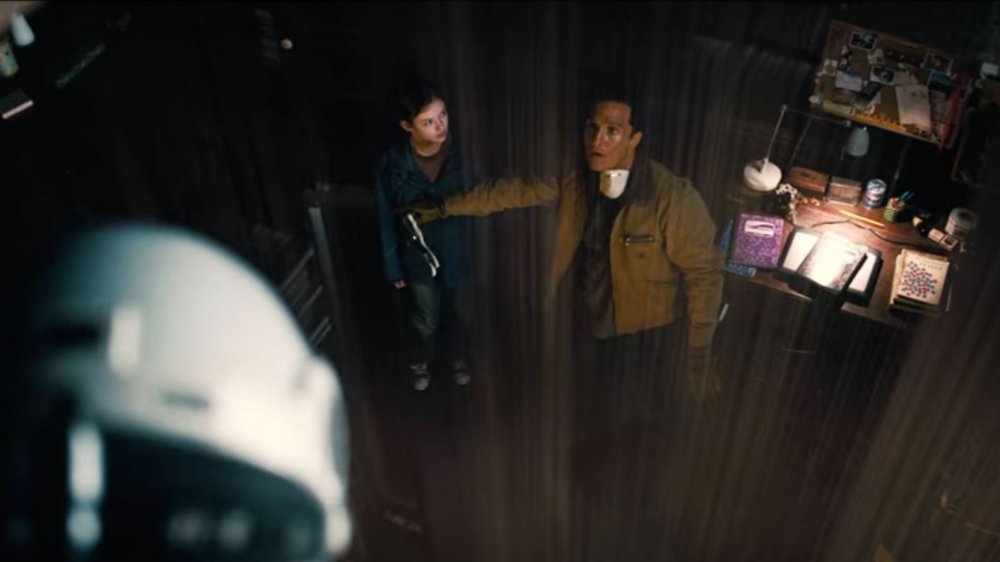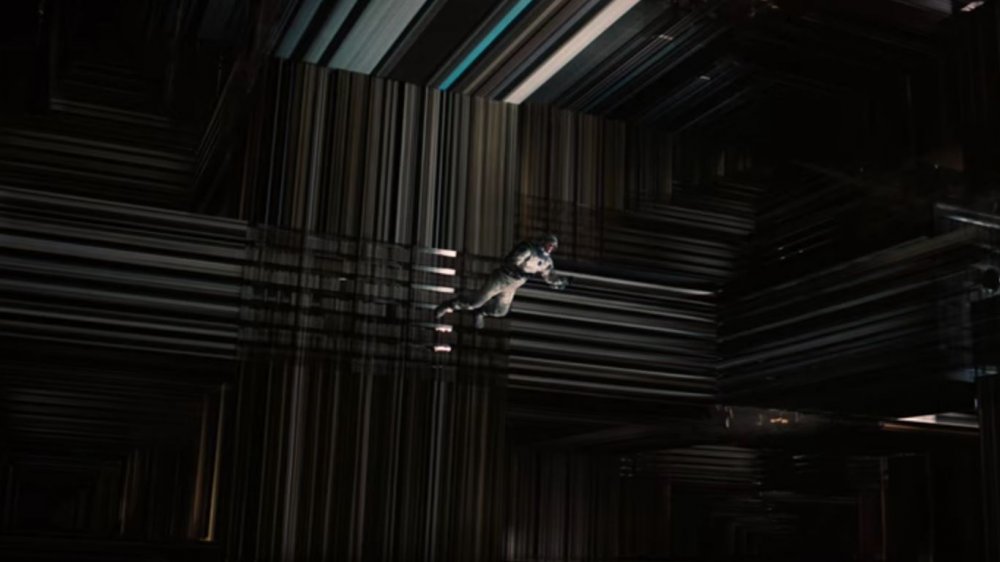We Finally Understand The Ending Of Interstellar
Christopher Nolan has a reputation for building immense, often cerebral movies that play with time and narrative structure: Memento (2000), The Prestige (2006), Inception (2009), and of course, Interstellar (2014). Years after people started debating whether the final, top-spinning scene in Inception was all in Dom's head, Interstellar had fans and critics scratching their heads at not only some of the inner logic of the film, but its final sequence, as well. Somewhere within the film's deafening orchestral score, tesseract libraries, surprise Matt Damon appearance, and philosophizing about love breaking through time and space (Leeloo Dallas Multipass, anyone?) fans may have finally dug to the center of the, well... black hole, not rabbit hole.
The confusion (and climax) set in when Mr. Alright-alright-alright himself (Matthew McConaughey as Cooper) enters the black hole Gargantuan and miraculously survives only to find himself in an apparently 4-dimensional space that resembles a library spanning off in every direction. This is not a naturally occurring environment, however, but one that was apparently built for him by a mysterious "they" (or "them") referred to throughout the film as the architects of a wormhole that appeared near Saturn. This wormhole is what allows Cooper and the rest of the plucky crew of the spaceship Endurance to travel to 3 exoplanets and gather "quantum data" essential to allow humans to travel off-world.
It's useful to note at this point that Cooper's daughter Murph is the one responsible for making these calculations that will let humans escape Earth. It's also important to note that Earth is now a desert-bowl wasteland that can no longer sustain life.
Love is the key to survival
If this all sounds convoluted... well, it is. Theaters were doubtlessly full of blank stares or pursed brows by the time we reach Cooper in the artificial, interdimensional library in the middle of a black hole. But there is hope at comprehension at the end (or rim) of the... let's say event horizon, and it centers around the relationship between Cooper and his daughter Murph.
The library affords Cooper an infinite view of windows into his daughter's childhood bedroom, arguably the symbolic center of his soul. Cooper realizes he can send his daughter messages in the past regarding the quantum data needed for her, as an adult, to decode the calculations required to help humanity leave Earth. So Cooper knocks over some books in his daughter's room, poltergeist-like, leaving her a message "S-T-A-Y," and also encodes quantum data he learned while on his space voyage into the watch he gave Murph before he left Earth. And so: Cooper sends knowledge of his future into the past to reshape his daughter's new future. How? Love. He believes that Murph will intuit, or simple know, that it was him who sent her the information.
That's the broader, final message of Interstellar: the individual connection between just two people — any two people's love, arguably — is the force necessary to save humanity. And in the case of the movie, it's the love between father and daughter, that saves us. The bond between Cooper and Murph is so strong that he's the only one who could reach her, the scientist responsible for rescuing our species.
"They" are "us"
So why did the artificial inner environment of the black hole look like a library that led to Cooper's bedroom to begin with? That point connects to the "they" who built the wormhole near Saturn.
In Interstellar, time and gravity are framed as the 4th and 5th dimensions, respectively. So whoever built the wormhole that allowed the Endurance to gather its quantum data had mastery of space (dimensions 1 -3), as well as the 4th and 5th dimensions. The architects foresaw the future and built the wormhole specifically for Cooper and his crew, not anyone else, knowing that is was only Cooper who would be able to transmit the data back to Murph because of their love for each other.
The characters in the film assumed that some kind of extraterrestrials built the wormhole to guide humanity. At one point, though, Cooper has an epiphany, and says to the Endurance's robot TARS, "They're not beings. They're us." Some future, alternate iteration of humanity paradoxically changed the past necessary in order for them to solve the mathematical mysteries of the 4th and 5th dimensions, so that they could themselves exist. Cooper and Murph were the keystone for the entire project, because of the most completely non-technological reason possible: basic human connection.
The higher themes of Interstellar might get lost in the mire at times, but it's only by unraveling this final mystery of the film's structure and events that we get a glimpse into what the ending really means. Alright, alright, alright.


